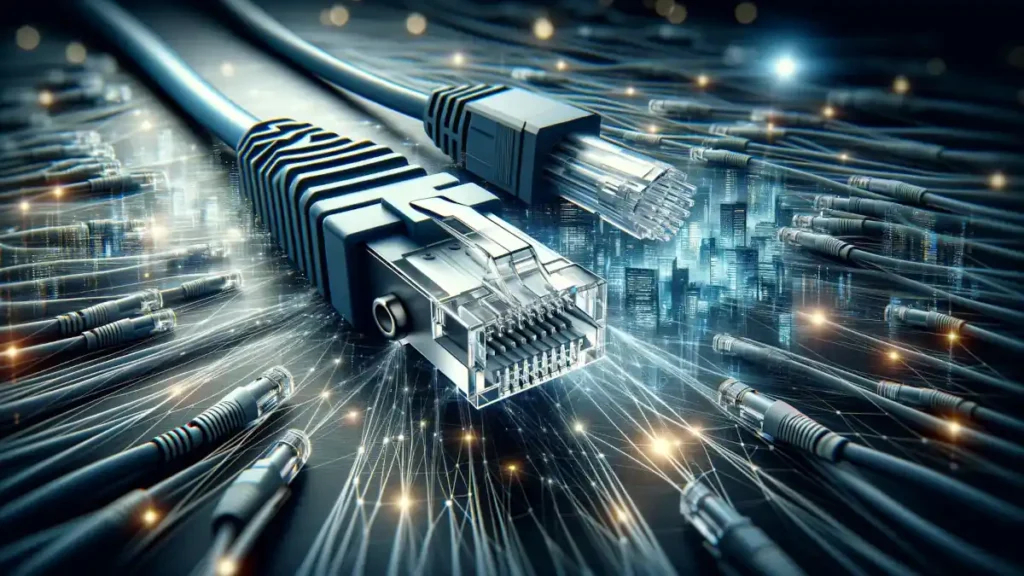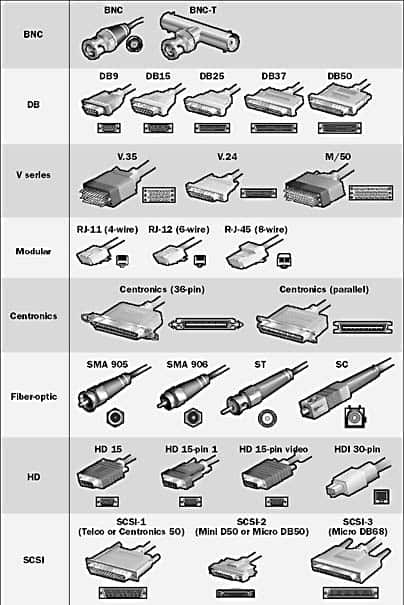A connector is a device that terminates a segment of cabling or provides a point of entry for networking devices such as computers, hubs, and routers.
This article unveils the diverse universe of connectors – from the ubiquitous RJ-45s that power our internet connections to the fiber-optic connectors weaving through data centers. Delve into the intricate details of their designs, understand their unique functionalities, and explore how these small yet crucial components shape our digital communications. Embark on a journey through the evolution, technicalities, and practical applications of connectors, uncovering their pivotal role in the vast landscape of networking technology.”
Table of Contents

1. Understanding Network Connectors
Network connectors are essential components in the architecture of computer networks. They serve as the physical interface between networking cables and devices, facilitating communication across different hardware. Connectors are integral to establishing and maintaining network connections, ensuring that signals are transmitted accurately and efficiently. Their design varies based on the type of cable they support, such as copper or fiber optic, and the network standards they adhere to.
Connectors can be distinguished according to their physical appearance and mating properties, such as jacks and plugs (male connectors) or sockets and ports (female connectors).
They can also be distinguished by their different pinning configurations, such as DB9 and DB15 connectors, which have 9 and 15 pins, respectively.
In addition, connectors are distinguished by the kind of electrical interfaces they support. Examples of different types of connectors include:
- Connectors for serial interfaces, such as RS-232 and V.35
- Ethernet connectors, such as RJ-45 and BNC connectors
- Fiber-optic cabling connectors, such as SC and ST connectors
2. Types of Connectors in Networking
There are literally dozens of types of network connectors, and the networking professional needs to be familiar with many of them. The illustration shows some of the common connector types used in different aspects of networking and telecommunications.

- RJ-45 Connectors: Used predominantly in Ethernet networks, RJ-45 connectors are common for twisted pair cabling. They support high-speed data transmission and are favored for their reliability and ease of use.
- Fiber Optic Connectors: Including SC, ST, and LC types, these connectors are used with fiber optic cables. They offer high bandwidth and are essential in long-distance and high-speed data transmissions. They’re less susceptible to electromagnetic interference but more delicate compared to copper cable connectors.
- BNC Connectors: Common in older Ethernet networks (10BASE2), BNC connectors are used with coaxial cables. They provide a secure connection but are limited in bandwidth and cable length, making them less common in modern networks.
- USB Connectors: While not traditionally used in network infrastructure, USB connectors facilitate peripheral and device connections, often playing a role in network setups, particularly in small office/home office environments.
- RS-232 Connectors: Used in serial communication, these connectors are less common in current networking but were pivotal in early computer communications.
Each connector type has its unique use cases, advantages, and limitations. RJ-45 connectors are widely used for their versatility and high-speed capabilities. Fiber optic connectors excel in high-speed and long-distance communication but require more careful handling. BNC connectors offer secure connections but are limited in performance compared to modern standards. USB and RS-232 connectors, while not primarily used for network connections, play roles in connecting devices and peripherals to the network.
3. Historical Evolution
The history of network connectors mirrors the evolution of computer networking itself. In the early days of computing, connectors were rudimentary, serving basic point-to-point communication needs. The advent of the Internet and Ethernet brought about the RJ-45 connector, a cornerstone in networking that supported faster and more reliable connections. The transition from coaxial cable connectors like BNC to twisted pair and fiber optics marked a significant leap in data transmission capabilities.
Fiber optic connectors like SC, ST, and LC further revolutionized networking by enabling high-speed, long-distance communication. This evolution from simple, limited-capacity connectors to sophisticated, high-speed interfaces reflects the rapid technological advancements in network infrastructure, accommodating ever-increasing data demands and shaping the connectivity landscape of today.
4. References
You should read the article for the connector type you are looking for: